What is a Voice Bot?
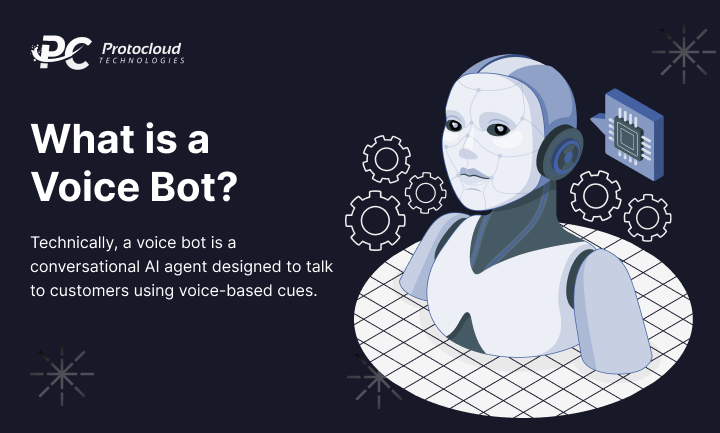
Technically, a voice bot is a conversational AI agent designed to talk to customers using voice-based cues. They are similar to voice assistants like Microsoft Cortana but focus on handling a specific set of tasks through voice-based interactions.
Businesses can integrate voice bots into various backend operations and frontend operations. They are useful as customer data-entry tools or customer care agents, improving efficiency and reducing human workload.
How Voice Bots Work
Voice bots rely on several core technologies:
- Machine Learning (ML): Helps a voice bot understand a customer’s question by applying AI algorithms.
- Text-to-Speech (TTS): Converts spoken language into text for processing.
- Automatic Speech Recognition (ASR): Lets the bot ascribe a voice to a specific user and create an identity.
- Natural Language Processing (NLP): Gives the bot contextual understanding of the user’s query.
- Natural Language Understanding (NLU): Enables the bot to comprehend conversational human language and provide relevant responses.
The Workings of a Voice Bot
The process of how a voice bot operates is simple:
- Voice Recognition: The bot uses ASR to recognize your voice and convert it into text.
- Understanding: The text is processed through NLU, NLP, and ML engines to understand the context, intent, meaning, and command.
- Response: The bot delivers the appropriate response or resolution.
Example: How a Voice Bot Works
Suppose you want to return an item you purchased:
- You call the brand’s customer care number.
- The voice bot requests specific inputs, such as “Please provide your order ID.”
- You send the order ID via your phone.
- The bot processes the request and provides an update.
This makes customer service faster and more efficient.
What is the Purpose of Using an AI Voice Bot?
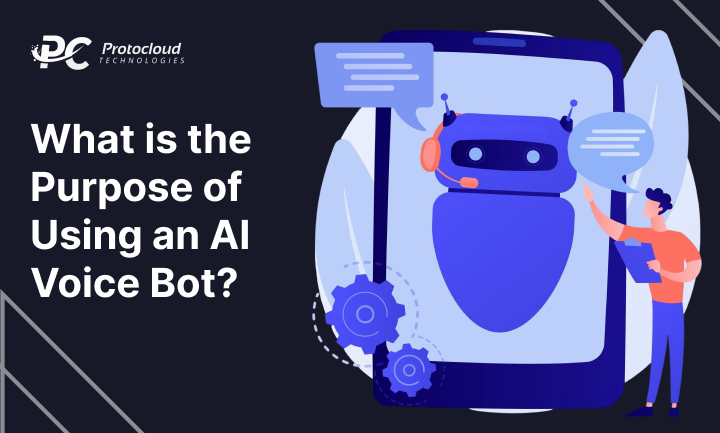
AI voice bots are mainly used for customer service and support. Their key goal is simple—solve customer problems quickly and correctly.
These tools are changing the way brands handle support. They give instant answers, reducing delays and frustration. According to IndustryARC, the voice bot market in customer service will grow by 21.3% between 2022 and 2027.
Another purpose is to create natural conversations with customers. This makes support feel smooth and human.
Voice bots use machine learning to break queries into key details like date, name, or ID. Then, they analyze the conversation as a whole to find intent. This allows them to deliver the right solution instantly.
For an ai app development company, adding voice bots to apps brings smarter support features. It also improves user experience and customer satisfaction.
Voice Bot Benefits for Businesses
Voice bots save time, reduce costs, and make customer service stronger. Here’s how they help businesses grow:
1. Improved Customer Support
Customers want fast and simple answers. Voice bots give quick support, anytime.
They manage many types of queries without long wait times. This makes the experience better and builds customer trust.
2. Better User Experience
Voice bots provide accurate, clear, and quick replies. This improves every customer interaction.
Their natural style makes conversations feel personal. As a result, customers enjoy a smoother journey and stay loyal.
3. Increased Engagement and Efficiency
Bots handle basic tickets instantly. This frees human agents for complex tasks.
They also talk to many customers at once, even during peak times. This improves efficiency and keeps customers happy.
4. Cost-Effective Operations
Voice bots work 24/7 with no breaks. A one-time setup gives you a support system that never stops.
This costs far less than hiring and training full-time staff.
For an ai app development company, voice bots are a low-cost way to upgrade customer support in apps while reducing daily expenses.
What Are the Different Types of Voice Bots?
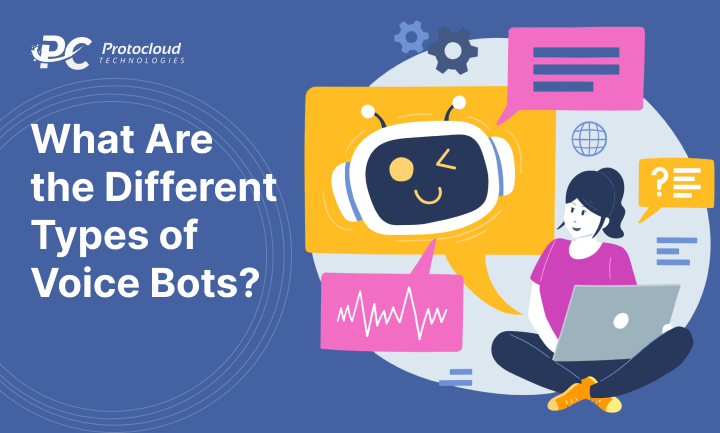
Voice bots use the same technology as chatbots, but differ in how they handle user queries. These differences define their categories. Understanding these types helps businesses choose the right solution for customer engagement.
Here are the main types of voice bots businesses use today.
1. Rule-Based Voice Bots
Rule-based voice bots are the simplest form of voice bot technology. They rely on predetermined rules to answer queries.
A typical example is an e-commerce voice bot that provides order updates through a simple call. These bots understand direct commands such as:
- “Where is my order?”
- “Call delivery agent”
They deliver fast and relevant answers, making them ideal for straightforward customer interactions.
2. AI-Assisted Voice Bots
AI-assisted voice bots are smarter than rule-based bots. They use AI-powered algorithms to process queries.
Artificial intelligence helps these bots better understand user queries and manage complex questions. For example, an e-commerce customer can say:
- “Reschedule my order to another date.”
The AI-assisted bot can interpret the request, access relevant information, and respond accurately. These bots work well for businesses needing more advanced voice interactions without heavy human involvement.
3. Conversational Voice Bots
Conversational voice bots combine various technologies such as NLP (Natural Language Processing), NLU (Natural Language Understanding), and ML (Machine Learning).
These bots deliver human-like conversations and manage more complex services. For example:
An e-commerce customer can converse with the bot to return a product. The bot can:
- Understand the query
- Guide the customer through the process
- Create a return request
These bots make customer interaction seamless, similar to speaking with a human agent.
How AI Voice Bots Work: The Technical Process
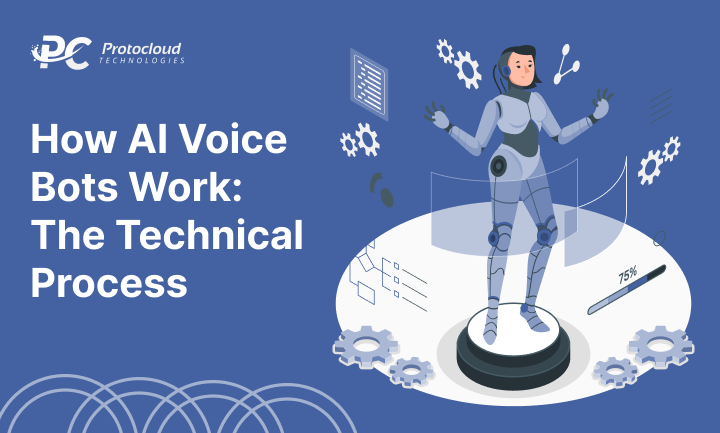
AI voice bots are transforming customer service. But how do they actually work? It’s simpler than it sounds. This technical process combines advanced voice recognition, AI, and seamless system integration to deliver human-like conversations.
1. Voice Recognition
Voice recognition uses Automatic Speech Recognition (ASR) to listen and convert spoken words into text. This process handles noise and accents to ensure accurate interpretation. It’s the first step that allows a bot to “hear” and process what a user says.
2. Audio Cleaning
After capturing the voice, audio cleaning removes background noise. This step improves clarity and ensures accurate transcription. Clean audio helps the bot interpret queries correctly without misunderstanding user intent.
3. Intent Analysis
Once the text is ready, Natural Language Processing (NLP) comes into play. NLP helps the bot decipher meaning beyond the words. For example: “I need my refund back, this is ridiculous.” → Refund request + frustration detected. This ensures bots understand the tone and context.
4. Response Generation
With intent clear, the bot moves to response generation. It uses generative AI combined with business data to create a personalized, relevant answer. This step turns a customer query into a precise solution tailored to the user’s needs.
5. Speech Synthesis
Finally, the answer is delivered through speech synthesis. The bot’s voice is natural, calm, and polite — much like talking to a human. This human-like voice improves the overall user experience and builds trust.
Integration with Business Systems
Here’s the game-changer: AI voice bots go beyond conversation. They integrate with your systems to cancel bookings, process payments, and update CRMs. Unlike traditional IVRs, bots can complete complex tasks automatically, enhancing efficiency and reducing costs.
Industry Use Cases: How Different Sectors Win using AI Voice Bots

AI voice bots are changing the way industries work. They cut costs, improve the customer experience, and automate repetitive tasks. This allows human teams to focus on higher-value work. An AI app development company can build custom voice bots that fit each industry’s unique needs. Let’s look at some real-world examples.
1. Banking & Financial Services
Banks use bots for balance checks, transaction verification, and fraud alerts.
Example: A U.S. credit union reduced fraud detection time by 70% using a voice bot. The bot spotted unusual activity instantly, building stronger customer trust.
Key Benefits:
- Faster transaction verification
- Real-time fraud detection
- Quick, accurate support
2. Healthcare
Hospitals use bots to book appointments, send prescription reminders, and triage patients.
Example: A New York hospital cut call wait times from 20 minutes to under 2 minutes during flu season. Staff gained time for urgent cases, while patients got faster help.
Key Benefits:
- Shorter wait times
- Automated scheduling
- Better patient experience
3. Travel & Hospitality
Airlines and hotels rely on bots for bookings, loyalty programs, and updates.
Example: A European airline shifted rebooking calls to voice bots. Call center costs dropped 25%, and passengers got smoother service.
Key Benefits:
- Faster booking updates
- Lower operating costs
- Higher guest satisfaction
4. Retail & E-Commerce
Retailers use bots to manage orders, returns, and product recommendations.
Example: One e-commerce giant launched a bot that answered questions and suggested add-ons mid-chat. This boosted cross-sell revenue by 15%.
Key Benefits:
- Quicker query handling
- Automated order tracking
- More sales via upselling
5. Telecom
Telecom providers deploy bots for bill payments, tech support, and outage updates.
Example: An Indian telecom automated 60% of Tier-1 calls, reducing churn by 12% in a year. Customers enjoyed faster service and consistent help.
Key Benefits:
- Lower call center load
- Faster problem-solving
- Reduced costs
6. Education
Universities and EdTech platforms use bots for admissions, course registrations, and support.
Example: An online learning platform automated 40% of student queries with AI voice assistants. Staff then focused on deeper academic needs.
Key Benefits:
- Efficient query handling
- Lighter admin workload
- Stronger student support
7. Real Estate
Agencies use bots for property inquiries, lead qualification, and scheduling.
Example: A U.K. real estate firm added a bot for rental inquiries. Leads rose 30%, and deals closed faster.
Key Benefits:
- Automated lead screening
- Faster bookings
- Higher conversions
Implementation Guide: Deploying AI Voice Bots Successfully
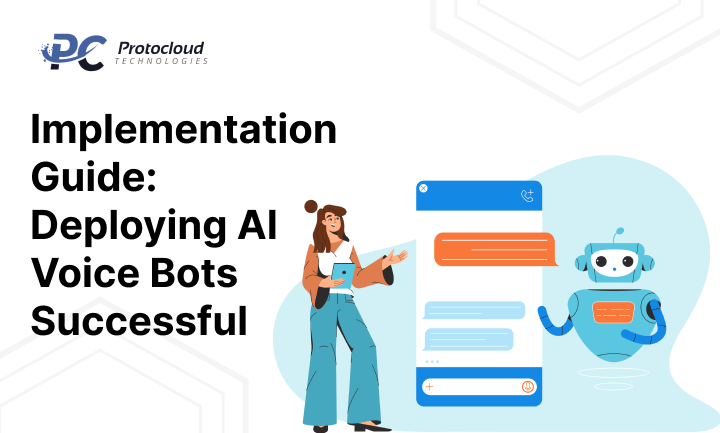
To get the most from AI voice bots, planning and optimization are critical. Many businesses work with an AI app development company to handle both technical and business goals effectively.
A. Platform Selection
Pick a platform based on integration, scalability, customization, and compliance.
- Tools like Cognigy or VoiceSpin suit large enterprises.
- Platforms like Synthflow are quick for small teams.
- An AI app development company can help match the right tool to your needs.
B. Conversation Design
Don’t automate everything at once. Start with high-value use cases like billing or scheduling.
- Build natural flows so conversations feel human.
- Test with real users to fine-tune accuracy.
C. Training & Integration
Link the bot to CRM, databases, and workflows for smooth service.
- Create a voice persona aligned with your brand.
- Train bots with real-world data, accents, and scenarios.
- An AI app development company ensures training covers the right cases.
D. Monitoring & Optimization
Deployment is just the beginning. Keep improving:
- Track KPIs like CSAT, resolution rates, and cost per call.
- Run A/B tests to refine flows.
- Update the bot’s knowledge base regularly.
Best Practices for Success
- Keep conversations natural.
- Allow easy handover to humans.
- Gather and act on feedback.
- Automate step by step—start small, grow big.
- Prioritize compliance and voice data security.
These best practices build trust and efficiency.
Measuring Success
Success can be measured in three areas:
Customer Experience
- CSAT (Customer Satisfaction Score)
- NPS (Net Promoter Score)
- First-contact resolution
Business Impact
- Cost savings
- Extra upsell revenue
- Reduced churn
Technical Performance
- Accuracy
- Speed
- Uptime
Enterprises using these methods often see 15–20% revenue growth. Working with an AI app development company helps achieve even stronger results.
Future Trends: What’s Next for AI Voice Bots?
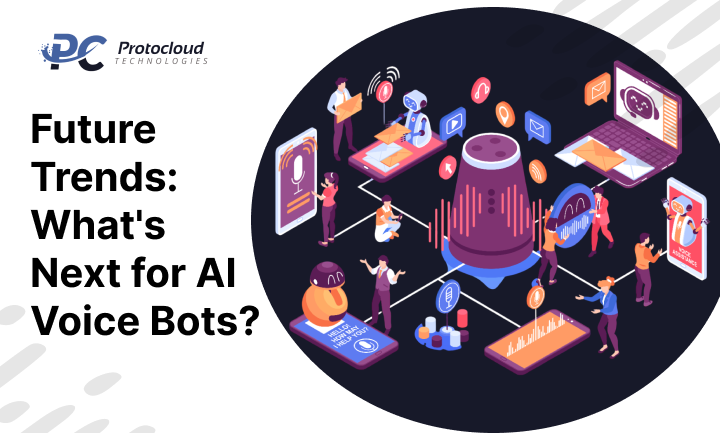
The future of AI voice bots is evolving rapidly. Businesses are adopting smarter solutions that go beyond simple responses. These advancements will redefine how brands communicate with customers.
Here are the most important future trends for AI voice bots:
1. Emotional Intelligence at Scale
Bots will detect emotions such as stress, joy, or frustration. They will adjust tone dynamically. This improves the user experience, making interactions feel human. For example, detecting frustration can trigger a calmer, more empathetic response.
2. Multimodal Conversations
Voice bots with visual AI will combine voice and visual elements. They might send follow-up links, receipts, or explainer videos while talking. This creates richer, more interactive customer engagement.
3. Hyper-Personalization
Using customer history and predictive analytics, bots will anticipate needs before being asked. For example, a returning customer may be offered a recommended product automatically. This moves interactions from reactive to proactive service.
4. Proactive Voice Commerce
Bots will not only answer queries but also initiate helpful actions. Example: “Your subscription is about to expire. Would you like me to renew it?” This proactive voice commerce creates upsell opportunities and deeper customer engagement.
5. Cross-Channel Continuity
Voice bots will allow conversations to flow across channels seamlessly. A discussion starting on WhatsApp can continue via a voice call without losing context. This will enhance convenience and trust in customer service.
These trends mean AI voice bots won’t just support customer experience—they will shape it entirely.
Why Should You Include Voice Bots for Your Customer Service Strategy?
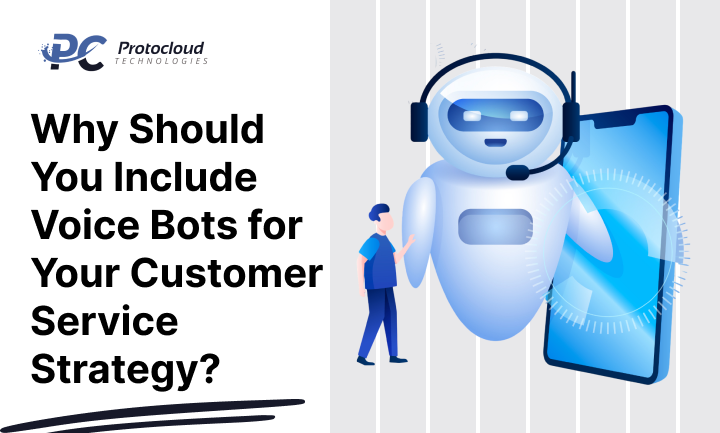
The demand for omnichannel experiences is growing. Customers expect fast and seamless interactions. AI voice bots can deliver these experiences consistently.
Here are key reasons to make them part of your strategy:
1. Providing Instant Customer Support
Voice-based support delivers instant answers. Customers speak their queries and receive quick responses. This removes waiting time and improves resolution speed, increasing satisfaction.
2. Reducing Service Costs
A full-fledged support center is costly. An AI voice bot can automate routine queries, reducing workforce needs. This saves costs while maintaining service quality.
3. Scaling Up or Down Easily
Customer needs change as your business grows. Hiring extra staff isn’t always viable. Voice bots can handle basic and intermediate queries while human agents focus on complex issues. This offers flexibility and cost efficiency.
An AI app development company can help implement scalable voice bot solutions, ensuring your customer service evolves with business demands.
Conclusion
AI voice bots are not here to replace humans—they replace inefficiency. They remove hold times, remove robotic menus, and reduce customer frustration. They free agents to focus on empathy-driven tasks while delivering instant responses to customers.
For businesses, this means improving efficiency and scaling without rising costs. The key question is whether you adapt now or fall behind.
The future of customer service is voice-first. AI voice bots are no longer optional—they are essential. They transform the customer experience, enhance operational efficiency, and drive growth.
Tomorrow’s bots will not only answer but predict needs, deliver personalization, and maintain emotional awareness. The real choice is whether to embrace this future now or risk falling behind.

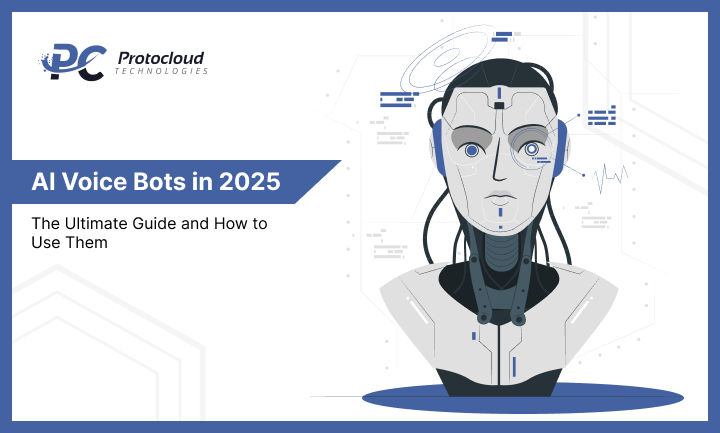

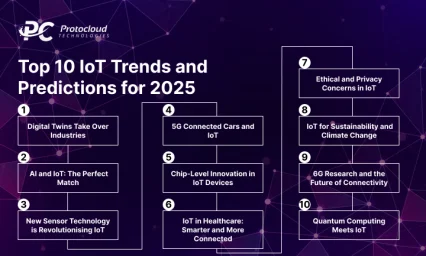

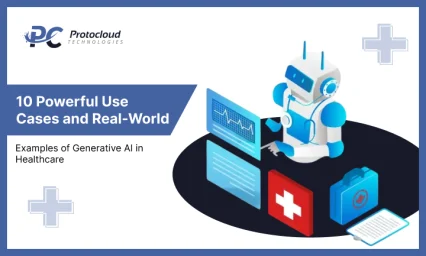

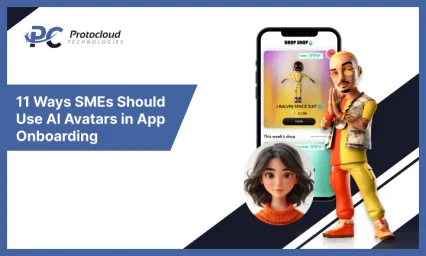

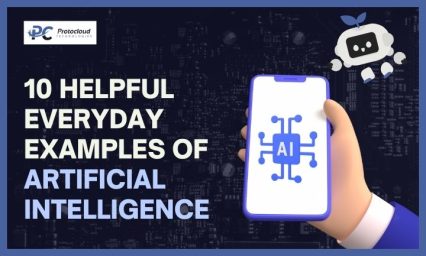
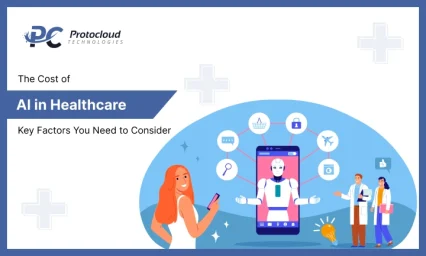
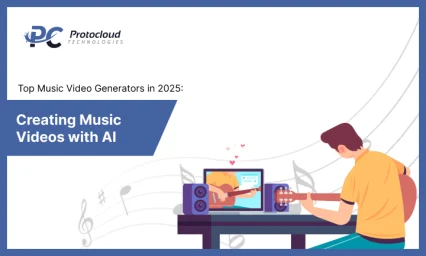
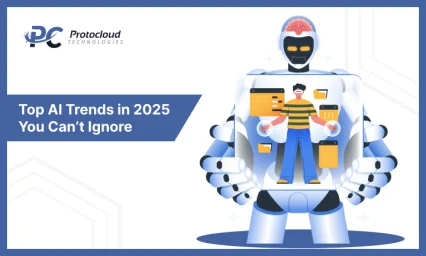
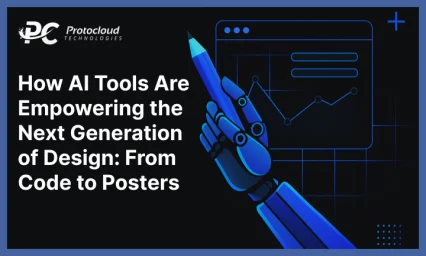
Leave a Reply